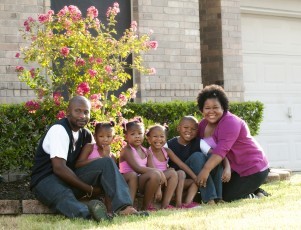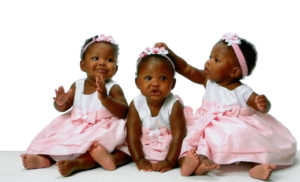 Hope For Three was inspired by the plight of a fantastic mother and father in Fort Bend County who experienced the triple pleasure and heartbreak of having identical triplets, all diagnosed with Autism Spectrum Disorder (ASD or autism).
Hope For Three was inspired by the plight of a fantastic mother and father in Fort Bend County who experienced the triple pleasure and heartbreak of having identical triplets, all diagnosed with Autism Spectrum Disorder (ASD or autism).
Helplessly watching this family navigate the frustrating waters of maxed-out social services, excessive bureaucracy, insurance companies’ denials, and society’s indifference, close friends pondered their options. As a result, Hope For Three was born in April 2011.
Inspired by the Montgomery triplets, Hope For Three, a local nonprofit and autism organization, was established to raise community awareness and provide resources and support through financial aid to families with autistic children and loved ones.
Please take a moment to read our story about faith, HOPE, and determination.
Hope and Eric Montgomery of Richmond, Texas, were proud, elated, and relieved when their spontaneous identical triplet girls were born healthy and strong. Londyn, Lakin, and Lauren joined big brother Collin on March 25, 2006.
The girls were born without complications and arrived home within days of birth. All three girls thrived and were happy, carefree, loving babies. However, at about two years of age, Hope noticed regression in Lakin: delayed reactions, lack of eye contact, repetitive behavior, disassociation, and her verbal communication rapidly ceased. Shortly after that, Londyn and Lauren followed in their sister’s footsteps with the same characteristics.
By age four, all three girls were diagnosed with PDD-NOS (Pervasive Development Disorder-Not Otherwise Specified). This diagnosis fell under the umbrella (at the time) of ASD or autism.
ASD is a neurological disorder that results in impaired social interaction and communication skills and restricted and repetitive behavior. The Centers for Disease Control and Prevention (CDC) reported in March 2023 that “1 in 36 American children are diagnosed with autism.”
ASD is a life-long condition with no medical cause or cure. In the United States, autism is more prevalent in boys than girls, 4:1. By way of comparison, this is more children than are affected by juvenile diabetes, pediatric AIDS, and childhood cancer combined.
Eric and Hope are two average American, hard-working, proud private citizens: Eric is a Senior Scheduler for Occidental Energy Marketing, Inc., and Hope, a full-time mother, tends to the children and the home while endlessly searching and researching available therapies, schooling, medical advice, treatments, and endless avenues to help their girls.
In 2011, the girls entered the Texana Children’s Center for Autism for a two-year program under the DARs Grant. In addition to the family cost share tuition, hearing tests, verbal testing, speech, occupational, and behavioral therapy (the list is too long to put on one page) and a substantial portion of which insurance does not cover, are only a few of the expenses the family incurred.
Most recognize the high cost of raising four children, now add the expenses of trying to secure proper treatment for the girls; this all but drained the family. The daily financial burden the Montgomery family struggles with and the emotional roller coaster they continue to experience are indescribable and unimaginable. The lifetime cost to care for one autistic person is estimated to extend up to $2.4 million. Now, think for a moment, times three.
Traveling a lifelong journey, both parents continue giving the girls every opportunity. They want to ensure the “Triple Divas” (as we affectionately named the girls) thrive to the best of their ability while maintaining a stable environment for their son, Collin.
Although their strength is often tested, Hope and Eric are confident persistence and perseverance will bring positive and encouraging hope to a challenging situation.
With limited resources available, the obvious and evident need to provide help, hope, and support to families like the Montgomerys is urgent.
Did you know?
- The annual average cost of care for one person with autism is estimated to be about $60,000.
- There is no known cause or cure for autism. However, autism is treatable with proper treatment and early intervention services.
- The Fort Bend County public school system serves more than 7,800 autistic students.
With the support of a kind and caring community, we can make a difference for our exceptional children.
To” Learn the Signs. Act Early.” click here.